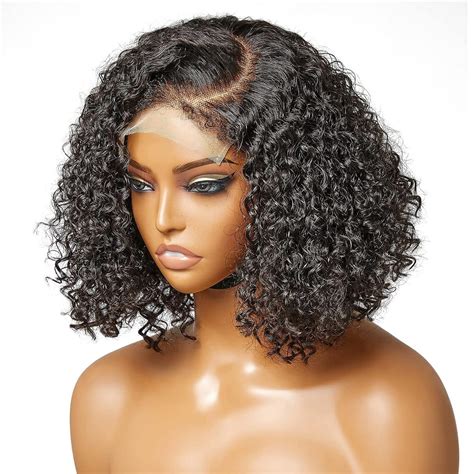Are you struggling to find wigs that fit your large head comfortably and securely? Whether you have a naturally large head or have experienced hair loss due to medical conditions, finding the right wig is crucial for enhancing your confidence and achieving your desired look. This comprehensive guide will provide you with all the essential information and tips you need to find the perfect wigs for big heads.

Understanding Head Circumference
The first step in finding the right wig is to accurately measure your head circumference. To do this, use a flexible measuring tape and wrap it around your head, just above your eyebrows and ears. The measurement you obtain is your head circumference.
Knowing your head circumference will help you determine the types of wigs that are suitable for your needs. Here are some of the most common types of wigs designed for large heads:
1. Large Cap Wigs: These wigs are specifically tailored for individuals with large heads. They typically have a larger cap size and an adjustable band that allows you to customize the fit for maximum comfort.
2. Stretch Cap Wigs: Stretch cap wigs are made with a flexible, stretchy material that expands to accommodate different head sizes. They can be easily adjusted to fit snugly without causing discomfort.
3. Capless Wigs: Capless wigs are constructed without a traditional wig cap. Instead, they feature a thin, breathable lining that allows for better air circulation and creates a more natural look. They often come with adjustable straps for a customized fit.
The materials used in wig construction also play a significant role in the comfort and fit. Here are some materials to consider for wigs for big heads:
1. Human Hair: Human hair wigs offer the most natural-looking appearance and are highly durable. However, they tend to be more expensive than synthetic wigs.
2. Synthetic Hair: Synthetic wigs are made from artificial fibers, which are less expensive and more readily available. They come in a wide range of colors, styles, and textures.
3. Lace Front Wigs: Lace front wigs have a thin lace panel along the front hairline, which creates a realistic and natural appearance. This design is particularly suitable for individuals who want to create a seamless transition at the hairline.
Once you have chosen the right wig, styling it properly can enhance the fit and complement your overall appearance. Here are some styling tips for wigs for big heads:
1. Add Volume at the Crown: Use volumizing products or tease the hair at the crown to create height and reduce the appearance of a larger head.
2. Choose Layers: Layered wigs can add movement and volume, making the head look smaller and more proportionate.
3. Avoid Bangs: Bangs can draw attention to the forehead, making the head appear larger. Consider side-swept bangs or a longer fringe instead.
There are several places where you can purchase wigs for big heads. Here are some options to consider:
1. Online Retailers: Websites such as Amazon, WigOutlet, and West Meadows Wigs offer a wide selection of wigs for large heads in various styles and materials.
2. Wig Shops: Brick-and-mortar wig shops allow you to try on wigs and receive professional assistance to find the perfect fit.
3. Hair Salons: Some hair salons also offer wig services and can help you find and style wigs specifically for big heads.
Finding the right wigs for big heads requires careful consideration of your head circumference, wig type, materials, and styling techniques. By following the tips outlined in this guide, you can confidently choose and wear wigs that enhance your appearance, boost your self-esteem, and empower you to embrace your unique beauty.
1. What is the average head circumference for a female?
According to the American Hair Loss Association, the average female head circumference is between 22 and 22.5 inches.
2. What if I have a head circumference that is larger than average?
There are several types of wigs specifically designed for large heads, such as large cap wigs, stretch cap wigs, and capless wigs.
3. What materials are best for wigs for big heads?
Human hair wigs offer the most natural appearance and durability, while synthetic wigs are less expensive and more readily available.
4. How do I style a wig to make my head look smaller?
Add volume at the crown, choose layered wigs, and avoid bangs to create a more proportionate and flattering appearance.
5. How often should I wash my wig?
The frequency of wig washing depends on the type of wig and your usage habits. As a general rule, wash synthetic wigs every 6-8 wears and human hair wigs every 8-12 wears.
6. Can I color a wig for big heads?
Yes, some synthetic wigs can be colored, but it is important to use a semi-permanent or temporary hair dye specifically designed for wigs.
7. How much do wigs for big heads cost?
The cost of wigs for big heads varies depending on the type, materials, and brand. You can expect to pay anywhere from $50 to $500 or more.
8. Where can I find professional assistance with choosing a wig for my big head?
Visit wig shops or hair salons that specialize in wig services. They can provide personalized recommendations and help you find the perfect fit.
